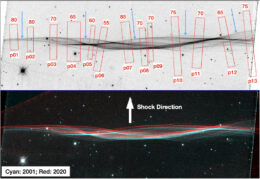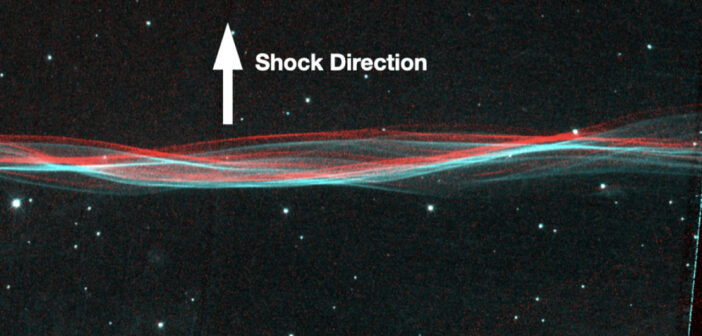
Top: H-alpha image of a segment of the supernova remnant in 2001. The numbers along the top indicate the proper motion, in milliarcseconds per year, of that section of the shock front. Bottom: H-alpha images from 2020 (red) and 2001 (cyan). Click to enlarge. [Sankrit et al. 2023]
If we could see the Cygnus Loop supernova remnant without the aid of a telescope, it would span an area of the sky six times as wide as a full Moon. The Cygnus Loop is a wispy, rapidly expanding shell of gas that marks the grave site of a massive star that exploded some 20,000 years ago. In a recent research article, Ravi Sankrit (Space Telescope Science Institute) and collaborators present new Hubble Space Telescope observations of a small portion of this famous supernova remnant. Paired with previous Hubble observations from 2001 and 1997, the new images clearly demonstrate how the remnant’s shock front has expanded over time. In the images above and to the right, red and cyan mark the position of the shock front in 2020 and 2001, respectively. By analyzing the shock’s location, Sankrit’s team found that the shock hasn’t slowed at all over the past 22 years, speeding into interstellar space at 240 kilometers each second. While this seems incredibly fast, it’s actually on the slow end for a supernova shock wave. To learn more about these new observations of the Cygnus Loop, be sure to check out the full article linked below.
Citation
“Third Epoch HST Imaging of a Nonradiative Shock in the Cygnus Loop Supernova Remnant,” Ravi Sankrit et al 2023 ApJ 948 97. doi:10.3847/1538-4357/acc860

